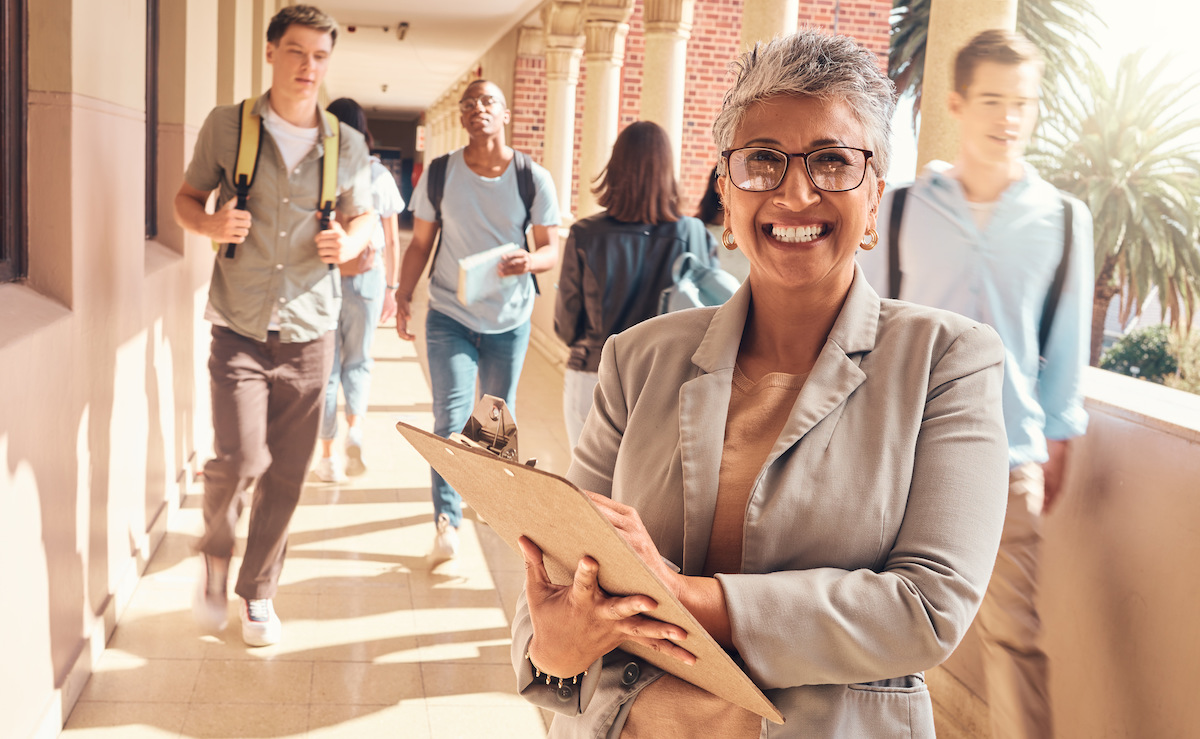As schools continue to adjust instruction and safety protocols during the pandemic, it is important to acknowledge that COVID-19 will be around much longer than most people were originally thinking. Additionally, we will experience a convergence of the COVID-19 pandemic and our “normal” seasonal influenza experiences.
The current state of society has taught a lesson that is still being digested by most and has not been fully realized, and that is the need to understand who is in the building at any given time and how they are affected by circumstances beyond their control. While many of us have looked at this in a limited context (active assailant scenario), we have generally felt the potential for understanding who was in our buildings at any given time was likely on the low probability side of actually occurring.
This is the first time where virtually everyone in the country was in need of putting student and staff accountability into practice. Another aspect of self-certification and how this has changed the way schools use this information is that once health officials understand the schools can provide actionable data on a significant portion of our communities, they will want to expand the use of these tools to identify and predict trends at the community level.
It’s also important to note that it is not too late for schools to work on their re-entry plans, protocols, and resources. Re-entry plans, pre-certification health screening, and the ability to keep our students and staff safe and healthy will be a necessity for the foreseeable future. Several states are introducing legislation requiring tracing and notification of employees, which will expire a couple of years from now. So from that perspective, we will be dealing with this virus and its effects for at least a couple of years, not to mention we don’t have a viable vaccination at this point.
When we talk about school safety and what we need to do to keep our campuses safe, we are looking at lessons learned and applying them to our plan and protocols. From that perspective, this is just another hazard that we have to account for.
However, due to the nature of the virus, there have been many lessons learned that will, or at least should, significantly shift the paradigm. On an immense scale, schools have had to quickly change from what they are currently doing to survive this mentality. This day and age is likely the first time in our history that schools are mandated to activate their Continuity of Operations Plans (COOP). Presumably, most of our schools did not know what the COOP was or didn’t have one until this pandemic. However, everything required to keep schools open and operational is/was part of a COOP. If they didn’t have a COOP, then they should document what they did in response to the pandemic, as this will serve two purposes: it created a Pandemic Response Plan, and at a minimum, created the foundation for their COOP.
Unfortunately, COVID-19 isn’t going anywhere any time soon. All of the capabilities and utility you gain from using Safety iPass will remain into the foreseeable future. Additionally, we are hearing many schools who are very happy with the ease of completing the self-screening survey, the certification process, and the data collected. Next year, we will see an expansion of the Safety iPass’s capabilities and effectiveness as we all learn more about this virus.
The lessons I would like to share with people are not lessons learned during the pandemic, but were verified during the pandemic. In my many years as an Emergency Manager, I learned that often, society doesn’t plan for what could happen. They wait until it happens. This recurring phenomenon had me create a saying I repeat often when I talk about schools and our safety; “It is not a Problem, until it is a Problem!”, which, once again, has been verified during this pandemic.
When Safety iPass was first introduced in July 2020 and received overwhelming interest in what it offers. However, when states began to require their students/schools to learn/teach remotely, that interest waned substantially. However, now we are seeing schools starting to consider reopening to in-person classes. Now it has become an issue again, and people will begin to get concerned about how they will accomplish self-certification and student/staff entry protocols in short order. It is becoming a problem because states and health departments are making it a problem for them. The sooner they address their requirements and concerns, the better off they will be.
I would recommend staying flexible, as we will see many changes coming down from the health departments. Plan ahead and document your actions for future events. This way, you won’t have to re-invent the process the next time. If you don’t have a Continuity Of Operations Plan, now is the time to get prepared for the next time; there is going to be a next time.
As always, CrisisGo is here to help and share guidance to improve safety for all schools. Take a look at how Safety iPass is helping schools stay safe this semester and into future semesters as well.












No Comments Yet
Let us know what you think